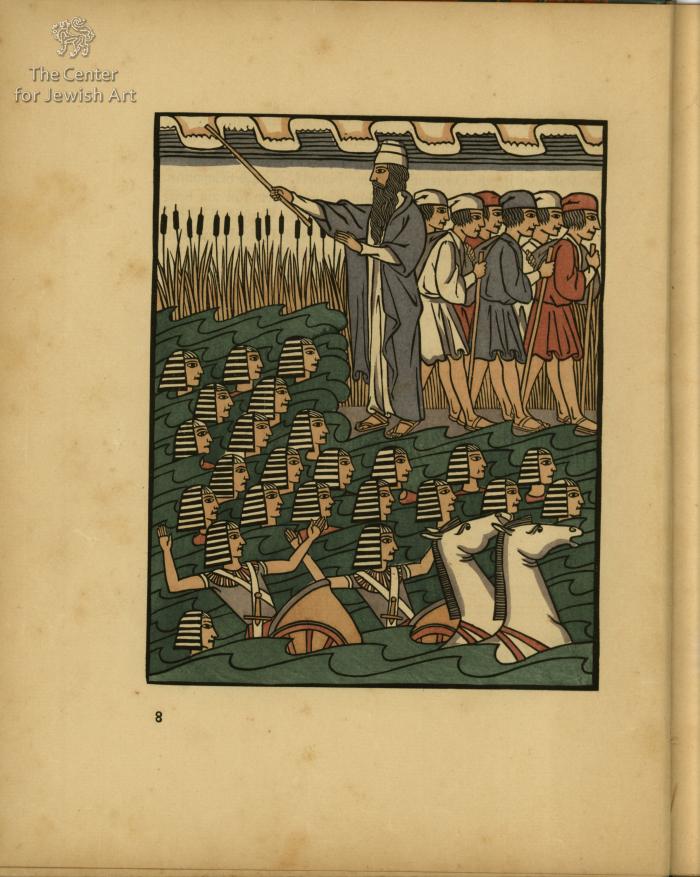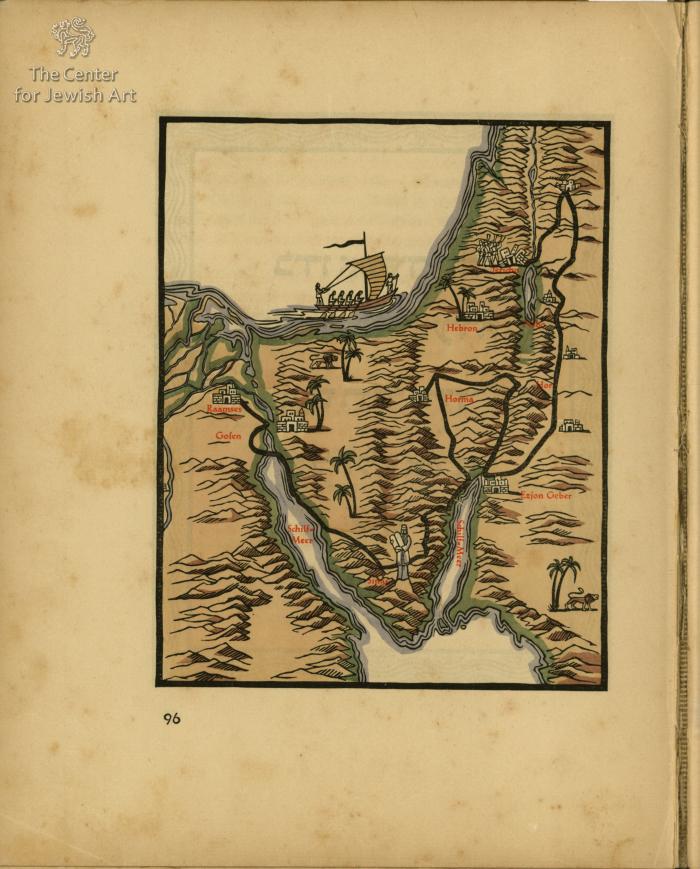Obj. ID: 35473 Offenbacher Haggadah, Offenbach, 1928

sub-set tree:
This text was prepared by William Gross:
The Offenbach Haggadah was commissioned by Dr. Siegfried Guggenheim (1873-1961) an attorney and art collector in Offenbach, near Frankfurt. Throughout his life, Guggenheim was engaged in Jewish cultural affairs, chiefly in promoting Jewish book arts. He was an avid collector of rare books and commissioned a new edition of the Offenbach Haggadah which was first printed in 1722. He commissioned the type designer Rudolf Koch to create new fonts and the painter Fritz Kredel, a student of Koch’s, to illustrate the new Haggadah which was printed in 1927 by the brothers Klingspor in a bibliophile edition of 300 copies. A Liberal Jew, Guggenheim translated the Hebrew text into German and also provided transliterations for the Hebrew blessings and explanations for the rituals in the hope of motivating assimilated Jews to celebrate the Passover seder. Guggenheim also inserted a novelty into the service: instead of ending with Next year in Jerusalem, the Offenbach Haggadah concludes with the words: "Next year in Worms on the Rhine, our home."
Siegfried Guggenheim held numerous positions in Jewish national organizations, such as the Centralverein— whose local Offenbach branch he chaired—and served as head of the Offenbach Jewish community from 1933-1938. After a brief stay at the Buchenwald concentration camp, Guggenheim emigrated to the U.S. in 1938 and settled in New York.
A beautiful edition of the Haggadah done in the modern graphic style of Germany in the 1920's.
OFFENBACHER HAGGADAH. Offenbach Am Main; Verlag Des Herausgebers Guggenheim, 1927. Clothbound. 4to. 97, [1] pages. 30 cm. First edition. Hebrew text with German translation. Original tan cloth spine, paper over boards, printed paper label. Edited by Siegfried Guggenheim, type set by the caligrapher Rudolf Koch, with 30 striking “Wiener Werkstaette” style hand-colored plates, including two maps of the Holy Land by Franz Kredel; printed in a limited edition of 300 copies (Number 124 of 300) as issued, this beautifully made volume is printed in red and black ink on fine paper, including dozens of musical notations; with color illustrations throughout depicting the plague set upon Egypt and the exodus. This Weimar era fine edition is based on the Offenbacher Haggadah of Isaac Offenbach (1779–1850) , a famous “Hazzan. Isaac ben Judah, surnamed Eberst, was born in Offenbach near Frankfurt. After he left his native town in 1799 to become a wandering Hazzan and musician, he began to be called, "der Offenbacher, " which soon became his official family name. In 1802 he settled in Deutz as a tavern musician, and in 1816 moved to Cologne, where he became a music teacher and in about 1826 the town Hazzan, a post he held until shortly before his death. The seventh of his nine children, Jacob, was the composer Jacques Offenbach. Isaac Offenbach was a versatile musician, a prolific composer (mainly of synagogal works) , and a writer and translator of merit. His historical importance stems from the fact that the documentation of his life and work has survived almost in full. His publications are a Haggadah with German translation and six appended melodies, some traditional and some composed by him (1838) ; a Hebrew-German youth prayer book (1839) ; and a number of guitar pieces. His manuscripts … include reminiscences by his daughter, and about 20 fascicles and folders of cantorial compositions and notations of traditional melodies. Over and above their value as "cantorial" antecedents of his famous son's work, these manuscripts provide both a treasure trove of the "great tradition" of Ashkenazi Hazzanut and an instructive picture of the development of a Hazzan at the beginning of the Emancipation. ” (2007 Encyclopedia Judaica). Since reprinted in a duplicate form, in 1960, this is one of the remaining extant copies of the first edition. Contains laid in single page review of the volume from a German journal “Der Morgen” of February 1928, written by Otto Kattler. Yudlov 3054; Yaari 2042 Editor: Sigfried Guggenheim
















